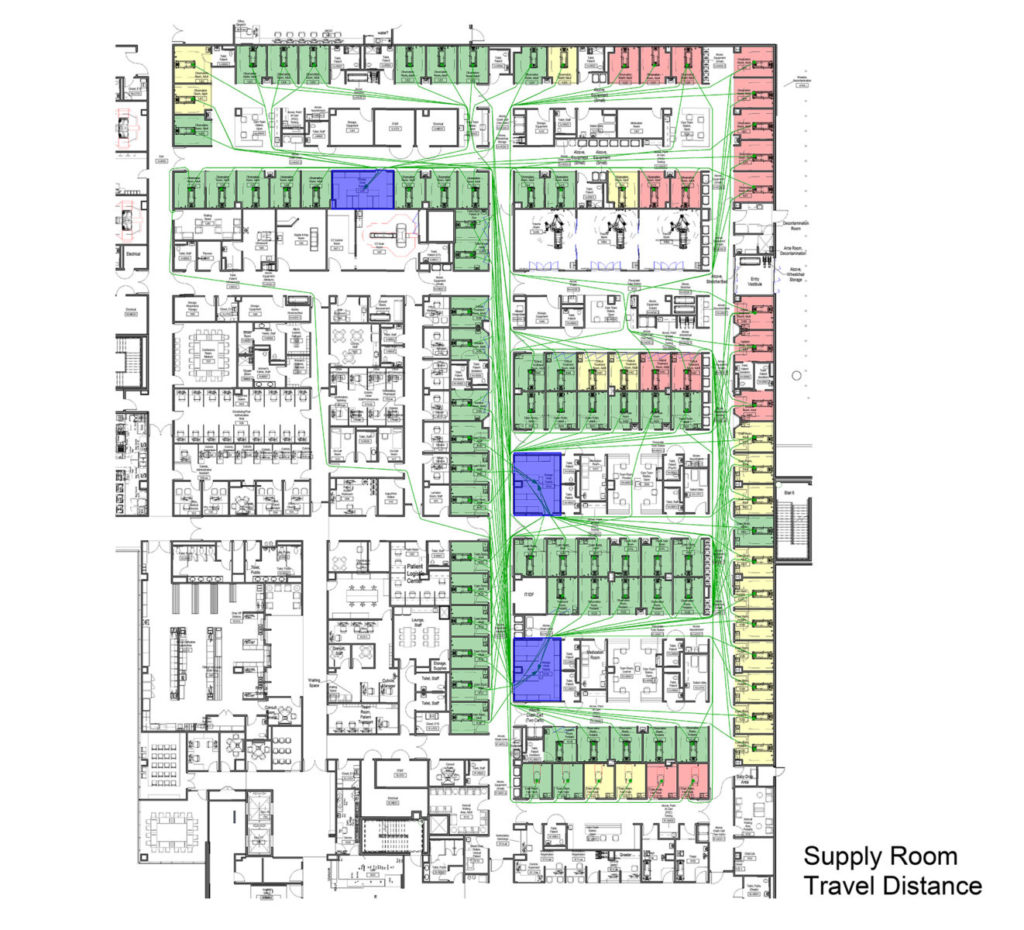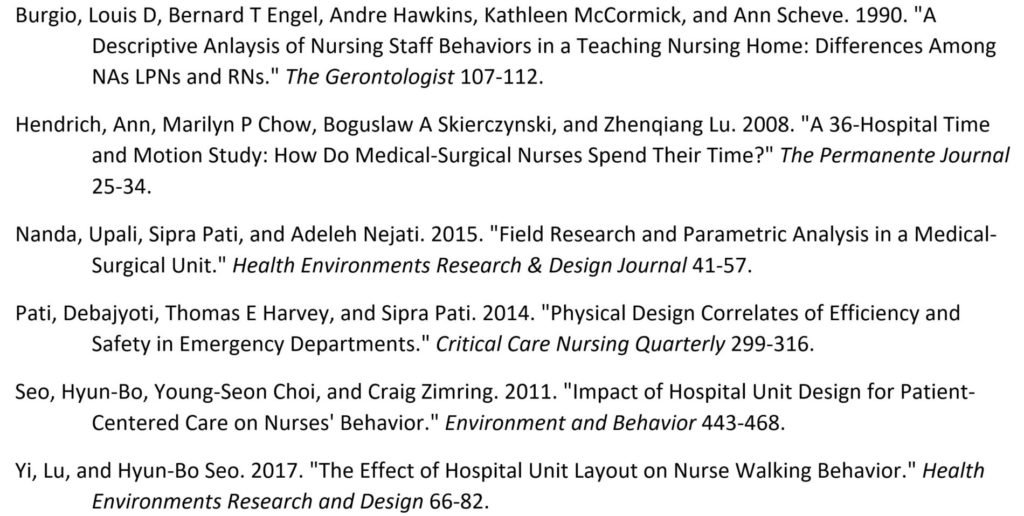How Much Walking is Too Much Walking? This Script Tells You How Your Design is Doing.
How Much Walking is Too Much Walking? This Script Tells You How Your Design is Doing.
Being a nurse requires walking. A lot of walking, in fact. Sure, it’s part of the job. But how much is too much? And what can architectural design do to start making an impact on these outcomes?
These were questions that came up when Cuningham Medical Planner Heather Castro, AIA, EDAC, WELL® AP, LEED® AP enlisted the help of the firm’s research specialist, Dustin Schipper. The initial inquiry guiding these questions was a simple one: what is a reasonable distance for a nurse to walk to a supply room? As a national leader in the field of healthcare design, Castro knew that nurses juggle multiple assignments at once and are often forced to multi-task because of complex building layouts and tight time constraints. Was there a way for designers to mitigate these inefficiencies by quickly and easily assessing the walkability of a given floorplan? Referencing a large body of existing research, Schipper was able to help Cuningham designers determine general rules of thumb, building a tool to help design teams quickly assess whether their programs were meeting their target adjacencies.
Background Literature
Addressing inefficiencies in walking patterns for healthcare facilities is not a new idea. In fact, there have been many studies over the past 20 years that track the daily movement patterns of healthcare professionals using a variety of techniques ranging from surveys, RFID badges and extended observation. When studying walking distance, researchers are often focused on understanding it in the context of time spent on various daily activities. A major walking distance study found nurses on a day shift can walk an average of 2.4-3.4 miles each day, significantly greater distances than many walk on days when they are not working (Hendrich, et al. 2008). Additional studies have also shown that some nurses may walk as many as six miles per shift (Pati, Harvey and Pati 2014). In addition to reducing the physical strain and distraction of excess travel time, decreasing walking distances could also lead to an increase in patient care activities, and thus provide a benefit to patient outcomes (Burgio, et al. 1990) (Hendrich, et al. 2008).
While most of these studies were concerned with the architectural impacts of space layout on walking distances, very few put forward target adjacency distances for program elements, opting instead to advocate for an “as close as possible” approach. One study by HKS and Texas A&M (Nanda, Pati and Nejati 2015) did put forward a general rule of thumb for judging if a distance was reasonable or excessive, which can be applied to many nursing program adjacencies in healthcare architecture. These rules of thumb are as follows:

Developing a Design Verification Tool
Based on the findings of his literature review and the distance measuring methodologies of several sources therein (Hendrich, et al. 2008) (Seo, Choi and Zimring 2011) (Yi and Seo 2017), Schipper developed a Dynamo script designed to measure the distances from each rooms of a given type to the nearest room of a second given type. This script can help designers verify their floorplans are optimizing average walking distance. This has the potential to enhance future occupant’s job satisfaction by reducing excessive walking distances / travel times, and potentially even lead to increases in time spent on patient care.

Although the Dynamo script was developed for use in healthcare facilities, its basic premise—measuring average walking time between specific sets of program elements—makes it potentially valuable for any market sector where programs are complex and travel times are critical. From determining the distance of each teaching station to dining facilities within a high school to calculating the time it takes to travel from each hotel room to a given amenity, such as a casino floor or resort, the script has potentially to be valuable on any project where distance and adjacency are critical metrics.
References


